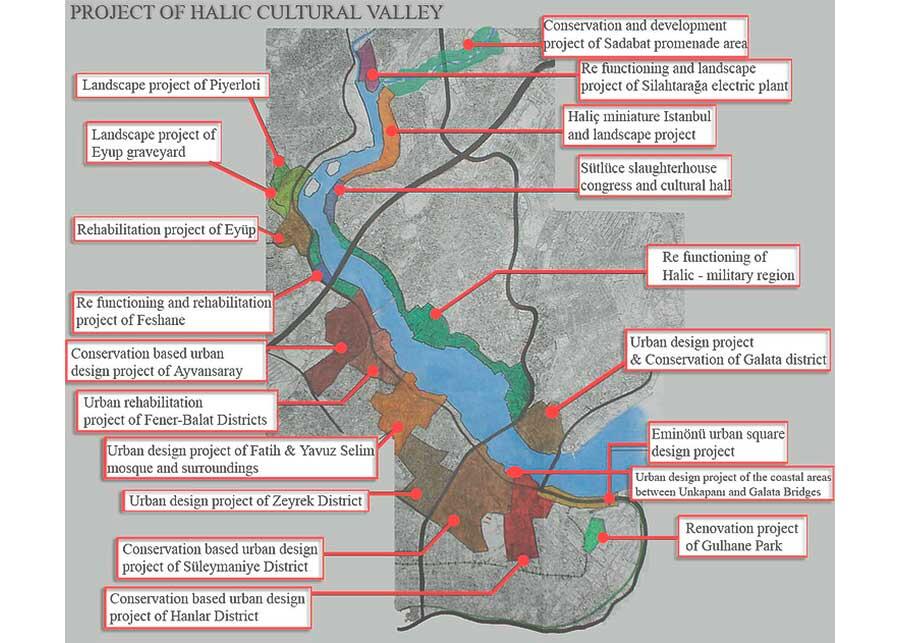
Instructor: Sibel Bozdogan and Cemal Kafadar
Course: STAGING THE CITY: URBAN FORM AND PUBLIC LIFE IN ISTANBUL
Students: YU QIAO
See project website for the full presentation: http://qiaoyu0401.wixsite.com/istanbulproject
Introduction
The preservation of heritage is always a relevant topic in ancient cities. Industrial heritage comprises sites which have been recently built, and are being addressed with increasing frequency. This category of heritage shows a clear process of transformation through modernization. There are distinct challenges to the integration of these sites into the daily public life.
In this project, I will elaborate this transformation by reviewing the historic background of industrialization in the Golden Horn, Istanbul. Then, by digitally presenting current conditions of industrial heritage, I will explain the problem and give some critical thoughts about it.
The Distribution of Industrial Heritage
In the past, when factories still played their industrial role, they could be divided into two categories: one group serving the state, the other one serving the city and the citizens. As mentioned above, early constructions were mainly owned and utilized by the state. The Golden Horn Shipyards, Lengerhane, and Feshane were established to serve the navy. Industrialization affected the Ottoman empire by changing which national affairs were going to be decided by what until then was the ruling class.
Feshane is a symbol that shows the spreading of industrialization to the city. It housed textile production, which was necessary for both the military and the citizens, as the representation of Empire’s productivity and advancement in International Exhibitions from the 1850s to the 1890s. After that, industrial strength of the empire was no longer restricted to the interests of the ruling class, but was to play a role in a wider urban and social development.
Therefore, from the late 19th century, various factories were established in Istanbul, which had a close relationship with people’s daily life. Şahbaz Agiya Mahdumlari Brick Factory, Kasimpasa Flour Factory, and Sütlüce Slaughterhouse offered daily necessities. Silahtarağa Power Station demonstrated the influence of modernization through the introduction of infrastructure into the city. Cibali Tobacco and Cigarette Factory, owned by the French when it was established, was the result of international trade and communication.
Furthermore, there were complex ownership transfers since the establishment of factories. Some were transferred from foreign companies to state-owned companies (Cibali Tobacco and Cigarette Factory, Silahtarağa Power Station), some were privatized (Feshane, Hasköy Shipyard), showing the disappearance of boundaries between the state and individual citizens, which might be seen as a by-product of a liberal economy. By the 1980s these factories, which had become “heritage,” were transferred to the state or individuals under the rubric of “culture,” the denomination accorded by the state in order to secure the revitalization of these abandoned buildings in a post-industrialized era.
Currently factories start to play a role in the cultural life, as their original functions have been abandoned. Cooperations between the state, private companies, and foreign companies are initiated to support this new function. Most of the buildings are reconstructed for public events, especially for “cultural events” mainly presenting an international image of the city and the state, while not necessarily serving a truly “public” purpose. The industrial area along the Golden Horn presented in the beginning an invading thrust, the urban texture of which was different from that of the residential areas. Currently both industrial and residential areas inherit city texture from the past, with boundaries between them still clearly visible. Thus, old factory buildings have to change their roles, and be integrated into the public and the transforming social fabric. In addition to housing functions of cultural self-representation of the city and the state to the rest of the world, they also become a part of the citizens’ daily life – in other words, they have to fit the modern city.
Conclusion
Modernization started to take effect when industrialization took off in Istanbul, and continued even in the post-industrial era. Istanbul, as a glorious capital of a great empire, had long carried the ambition to show the strength of the empire to the world. Factories that remain today, evidence of early industrialization, thus become also containers of the official collective memory.
Currently, modernization is no more industrialization, but has evolved to have more meanings, including “culture.” As the influence of modernization changes in the context of contemporary socioeconomic transformations, Istanbul has to find out a way of culturally expressing itself in the period of globalization. The conversion of factories into heritage is one manifestation of this ideological shift.
However, contrary to the historical period of transformation when modernization became a part of people’s daily life, the physical industrial sites are today still far from being completely integrated. Most of the reconstruction is not conducted for local residents, but for a representation of national culture and identity in the context of globalization. It is a worldwide problem that heritage is “abused” and isolated from the daily public life, and not necessarily an instrument to pursue general welfare. This other potential of repurposing industrial buildings needs to be realized to a greater extent and improved upon in the future.